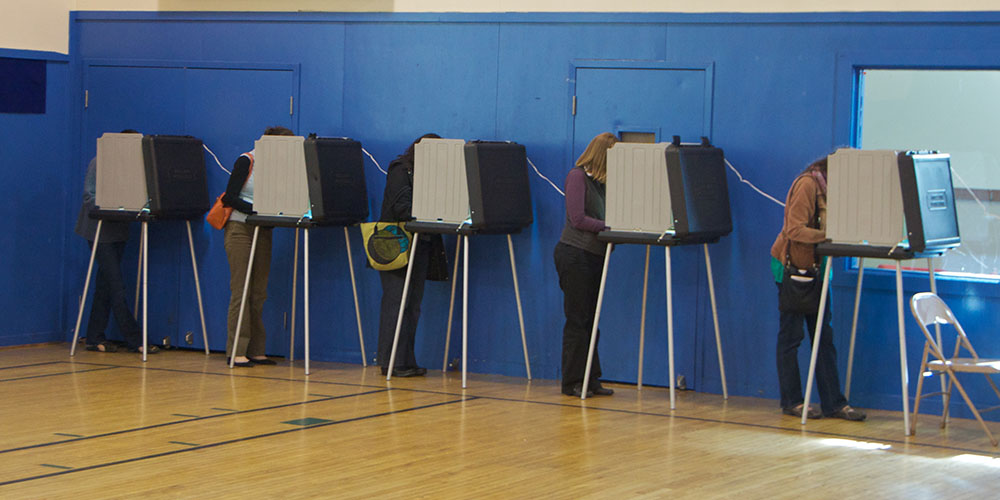
(Photo: Steve Rhodes/Flickr)
As we fight to sustain and improve democracy, we should remember that elections are a means to an end. The real election results are whether empowered citizens select capable leaders who are enabled to fix important problems.
The mechanics of elections are important, and the integrity of elections — now under threat in some states — is imperative. But ultimately, elections are one element of a governance system that allocates resources and provides services, protects civil rights and vulnerable neighbors, and much more.
While the June results are parsed, California’s elected officials and their professional staffs are grappling with a new state budget, a lingering pandemic, a worsening drought, an impending summer of wildfires — and again, much more.
So how should we assess the series of electoral reforms put in place in the late 2000s and early 2010s?
The public trauma of recent events may numb us to the historic partisan gridlock in California’s capitol, the growing debt and the warring among the State and local agencies that defined those times — times so bad that a panoply of civic organizations and policy entrepreneurs jumped into the fray.
California Forward, one of those groups, focused on trying to end gridlock in the capitol, improve fiscal decisions and restore capacity to address key issues, including social, economic and racial disparities.
One objective was to make it possible for elected representatives to work across the red-blue landscape, across the business-labor divide, and soften any number of the hardened positions that prevented improvement in educational outcomes, or transportation investments, etc. Some of those individuals may be moderate in their views, and others just pragmatic.
The group knew it would take more than one reform and that none of the options were perfect. They were confident that reducing the anti-democratic distortions of gerrymandering was part of the solution, and so backed citizens redistricting — Proposition 11 in 2008 — and worked to ensure the Commission was diverse and the public process was robust.
After researching other options and the public’s sentiments, California Forward supported “Top Two” primaries — Proposition 14 on the 2010 ballot — and the flexibility that Proposition 28 provided to legislative term limits in 2012.
In three election cycles, California voters reformed three significant elements of the system that shaped their choices, as well as the rules and incentives shaping the behavior of candidates and legislators — and in particular, enabled them to diverge from partisan orthodoxy to represent their entire districts.
In 2018, California Forward debriefed these changes with some of the lawmakers who were impacted by the reforms, and their overall response was highly positive, particularly regarding Top Two.
The lawmakers said it encouraged them to appeal to a broader set of voters and shifted the focus from responding to partisans to responding to communities. They called out some of the downsides, including the potential for confusing voters. But importantly and overall, the early indicators were that giving all voters a chance to vote in the same primary enabled better policymaking.
A variety of other fiscal and governance reforms were put in place during that decade, including Proposition 25 in 2012, which allowed the state budget to be approved by a simple majority vote. Proposition 2 in 2014 required that surges in “one-time” revenue be used to pay down debt, saved for future recessions, and allocated for one-time expenditures. While no one anticipated the kind of revenue surpluses of today, the guardrails put in place by Prop. 2 will make it much easier to handle the next recession.
It is very difficult to determine the impact of one change in dynamic systems. At the same time, it is essential to assess the overall performance of the electoral, fiscal and governance systems. Are we better off than in the mid-2000s? No doubt. Just as there is no doubt we need to continuously assess and refine these systems to better serve all Californians.
Jim Mayer is a Senior Fellow and President Emeritus of CA FWD.

